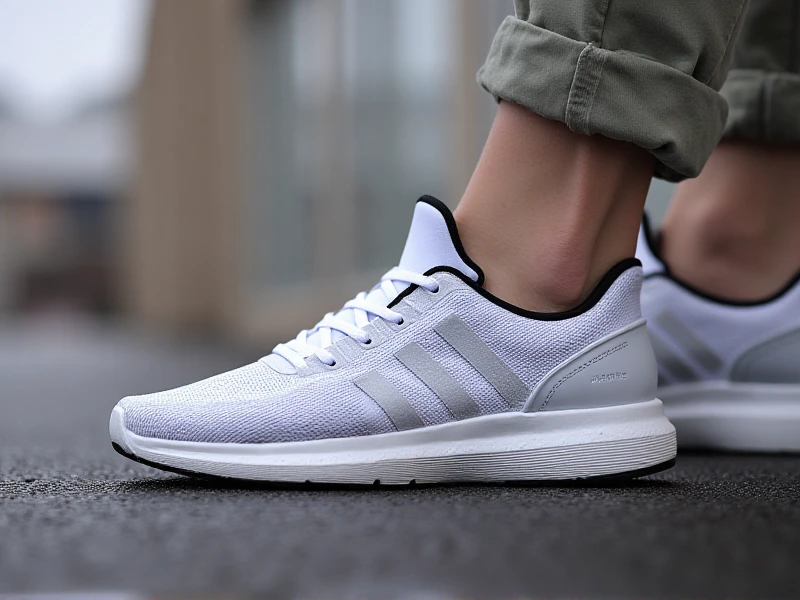Why Women's Sports Shoes Are More Than Just Athletic Gear: A Complete Guide
2025-06-01

Finding the perfect pair of sports shoes is essential for women who value fitness, comfort, and style. Modern women's sports shoes are engineering marvels designed for specific activities, foot types, and personal preferences, moving far beyond a simple one-style-fits-all approach. Whether you're pounding the pavement, dominating the gym, hitting the trails, or just seeking all-day comfort, the right shoes make a world of difference.
Understanding Foot Anatomy and Shoe Design
Women's feet are typically narrower in the heel relative to the forefoot and have a different arch profile compared to men's feet. Reputable brands design women's sports shoes with these anatomical differences in mind. Key features often include:
1. Narrower Heels: A snugger fit in the heel cup prevents slippage and enhances stability during lateral movements common in sports like tennis or HIIT.
2. Modified Midsole Foam: Often softer or designed with a slightly different density profile to accommodate lower average body weight.
3. Specific Arch Support: Designs cater to common female foot arch structures, reducing pronation-related issues.
Choosing Shoes Based on Your Sport/Activity
Running:
Road Running: Lightweight, flexible shoes with ample cushioning for impact absorption. Look for breathable uppers and a comfortable rocker sole. (Keywords: women's running shoes, cushioned running shoes)
Trail Running: Durable, protective uppers, aggressive outsoles for grip, and stiffer midsoles for stability on uneven terrain. More robust toe protection is key.
Training & Gym Work:
Cross-Training/HIIT: Shoes need versatility – cushioning for jumps, lateral stability for side-to-side movements, and a flat, stable base for weightlifting. Avoid overly cushioned running shoes here. (Keywords: women's cross training shoes, HIIT shoes for women)
Strength Training: Minimal cushioning, wide flat base ("zero-drop" or low-drop), excellent ground feel. Stability is paramount for lifting safely.
Court Sports (Tennis, Basketball): High-top or mid-top for ankle support, durable outsoles for quick starts/stops and pivoting, reinforced sides to withstand abrasion. Responsive cushioning is essential. (Keywords: women's basketball shoes, women's tennis shoes)
Walking/Hiking: Prioritize comfort, cushioning, and support over long distances. Hiking shoes/boots need ankle support, tougher uppers, and aggressive grip. Walking shoes focus on smooth heel-to-toe transitions. (Keywords: women's walking shoes, women's hiking shoes)
Everyday/Casual Wear: Comfort is king! Focus on lightweight cushioning and versatile styles that blend performance with lifestyle aesthetics. Many running or walking styles excel here. (Keywords: comfortable women's sneakers, lifestyle athletic shoes women)
Key Features to Consider in Women's Sports Shoes
Cushioning: From minimalist to maximum cushioning. Choose based on comfort needs, activity impact level, and personal preference.
Support & Stability: Crucial for overpronators or those needing motion control. Look for firmer medial posts or integrated guidance systems within the midsole. Neutral shoes offer less rigid support.
Flexibility: Shoes should bend naturally at the ball of the foot. Too stiff can fatigue feet; too flexible might lack support. Match flexibility to the activity (more flexible for sprints, less for trails).
Upper Materials: Breathable mesh for running, durable synthetics or leather for court sports/trails. Consider sock-like knit options for seamless comfort. Look for recycled or sustainable materials!
Drop (Heel-to-Toe Offset): Lower drop (0-6mm) promotes a more natural foot strike and ground feel; higher drop (8-12mm) eases strain on Achilles tendons and calves. Transition gradually if changing significantly.
Fit: This is paramount!
Sizing: Get professionally measured regularly, as size can change. Sizing differs between brands and even models.
Width: Many brands offer standard (B) and wide width (D) options.
Length: Ensure a thumb's width (approx. half an inch) of space between your longest toe (often the second toe) and the end of the shoe.
Try Time: Always try on shoes later in the day when feet are slightly swollen. Wear the socks you intend to use for the activity.
The Rise of Style & Innovation
Gone are the days where performance meant sacrificing looks. Today's women's sports shoes come in an incredible array of colors, patterns, and designs. Leading brands continuously innovate with improved foams (react, zoomx, boost, fresh foam), energy return technologies, sustainable materials, and lighter-than-ever construction. High-fashion collaborations also blur the lines between athletic gear and street style.
Investing in Your Health and Performance
Wearing worn-out or ill-fitting sports shoes is a shortcut to discomfort, pain, and potential injury (like shin splints, plantar fasciitis, or knee issues). Replace women's running shoes every 300-500 miles. Replace training shoes when they lose support, cushioning, or show significant wear. Listen to your body – pain is a signal something is wrong.
Finding Your Perfect Pair
1. Know Your Activity: What will you use the shoes for MOST of the time?
2. Understand Your Feet: Do you have high arches, flat feet, or a neutral gait? Do you need wide sizes?
3. Set a Budget: Quality shoes are an investment worth making.
4. Try Before You Buy: Visit a specialty running or athletic store for expert fitting and gait analysis whenever possible. Test the shoes on different surfaces in the store.
5. Research: Read reviews focusing on users with similar needs and foot types.
Choosing the right women's sports shoes empowers your active life. It’s about investing in comfort that propels you forward, technology that enhances your performance, and style that fuels your confidence. Find the shoe that fits your purpose and your feet, and step into your next workout or adventure with the perfect support beneath you. Don't underestimate the power of excellent footwear – your feet will thank you!
Category: